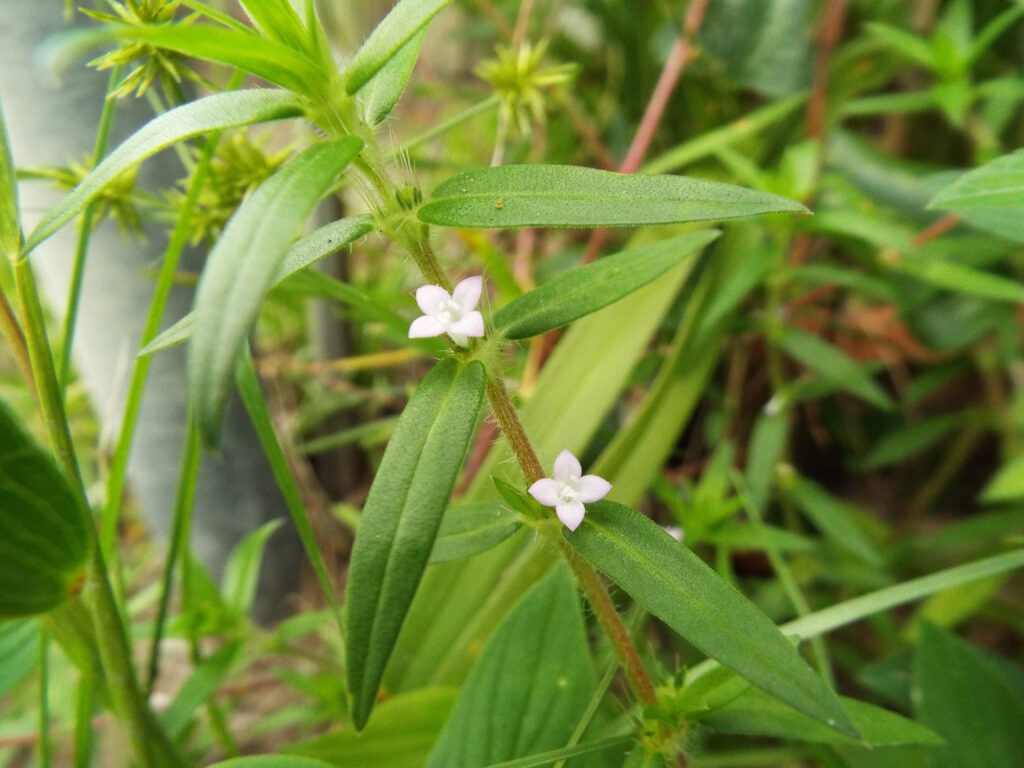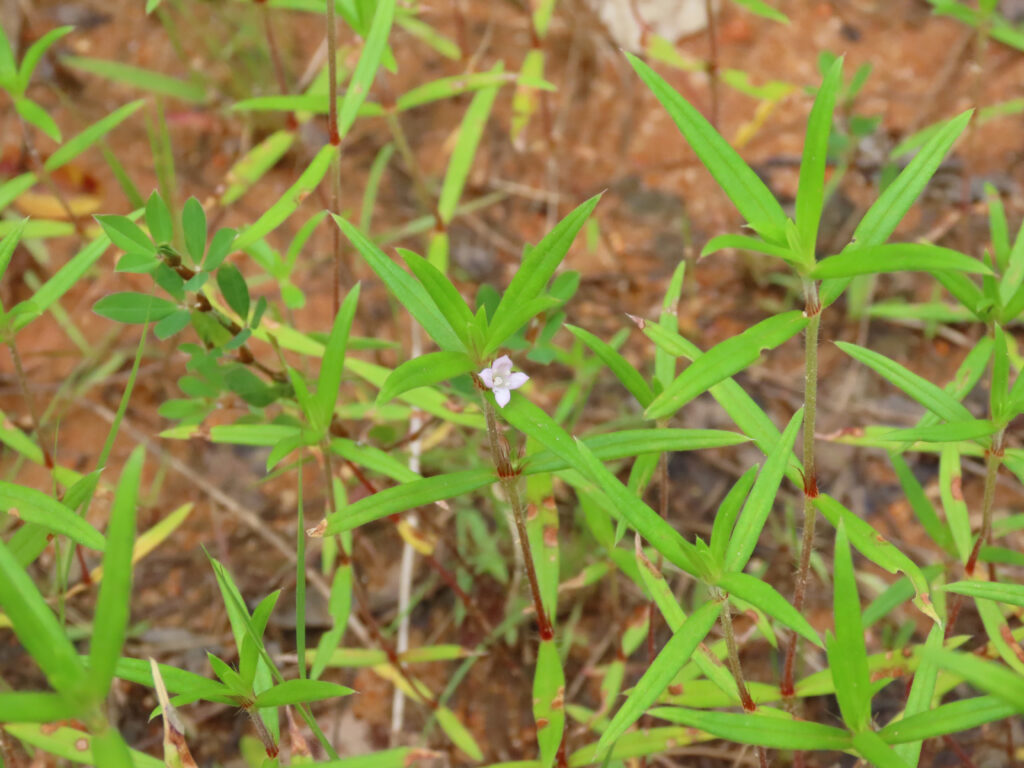




This week for Flora and Fauna Friday, we have an upland weed that fills a pollinator need, Poor-joe (Hexasepalum teres).
Poor-joe, also called Rough Buttonweed, is found on high, dry, upland soils all across South Carolina. It does best where little else grows, even on parched sands and gravel roads. Poor-joe is what’s called a pioneer plant, a species that is the first to re-colonize a heavily disturbed ecosystem. It grows in all manner of dry and sunny habitats, from eroded mountainsides in the Appalachian foothills, over top the Sandhills in the midlands, down to the sand dunes of our coastal barrier islands, and on every similar site in-between. Poor-joe usually grows about six inches high before branching and falling back down onto the ground around it. It repeats this patter and grows like this across the sand into a loose, limp bush or groundcover a foot or two across. Poor-joe’s leaves are held opposite and are narrow with a pointed tip and a prominent fold down the center. Its stems are sparsely hairy and usually a prominent burgundy color. It blooms in summer, peaking in August and September, and bearing a single flower at a time on each stem node. The flowers of Poor-joe are tiny and pastel-pink with four-pointed petals and white anthers. Although not particularly showy and despite their small size, Poor-joe is a great pollinator plant. Its flowers are often frequented by native bees and small butterflies where it provides a reliable source of life-giving nectar on the hottest of days in even the most barren of landscapes.